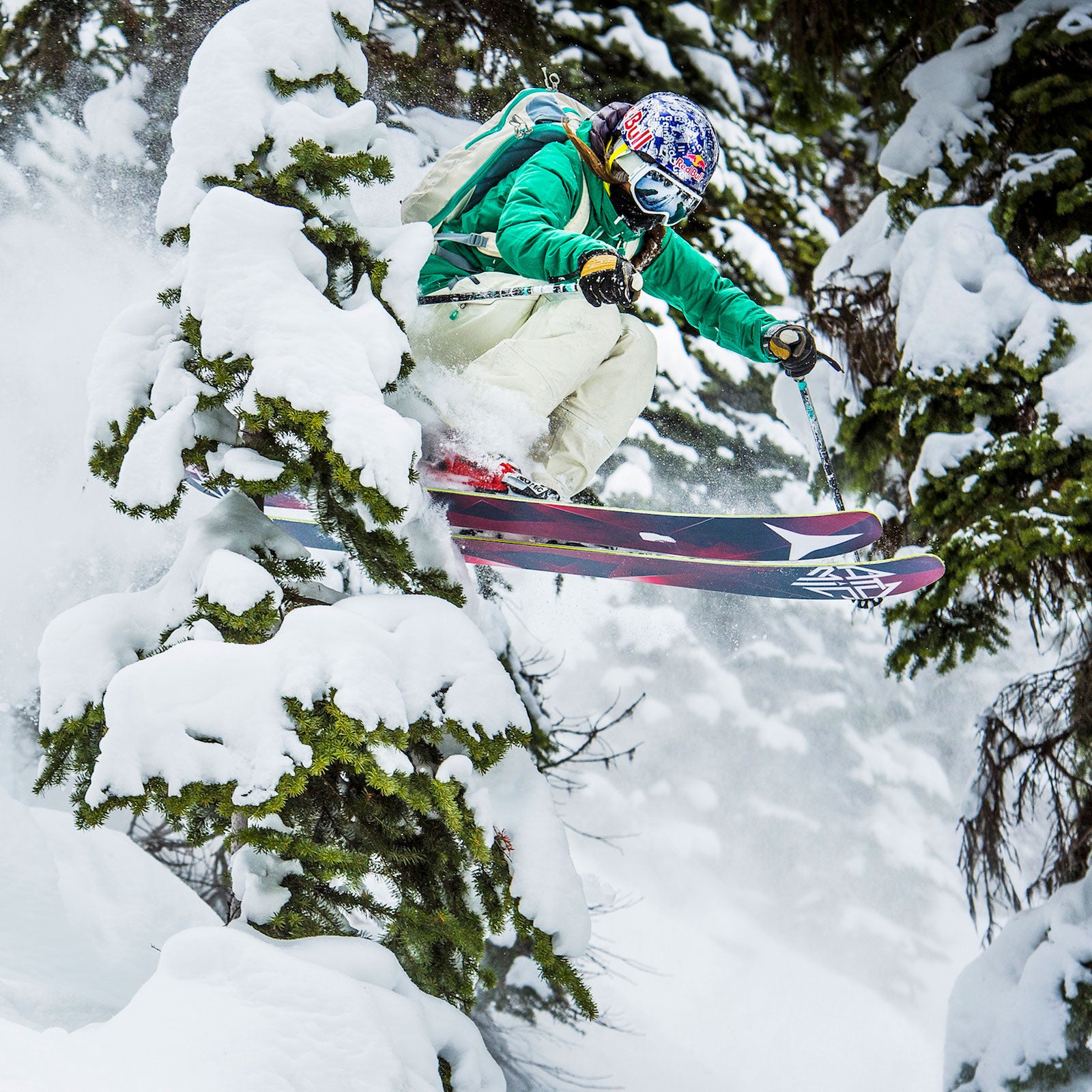Big-mountain skier Michelle Parker has carved a career out of pushing her body higher and further in a single mission than most skiers will in an entire season. In addition to her talent for skiing down North America’s steepest slopes with confidence and grace, the 31-year-old has developed a fondness for unforgiving ascents. Last season she completed the most impressive one of her career: she summited and skied Denali, the highest peak in North America at 20,310 feet, with a team of athletes including Ian McIntosh, Cody Townsend, Shane Treat, and John Collinson. During the nine-day climb, she battled whiteout storms, thinning air, and nausea while carrying the equivalent of her body weight in supplies. Parker says the experience was unlike anything else she’s accomplished.
During the off-season, the Tahoe, California, native sticks to a steady regimen of climbing and long-distance road biking that keeps her muscles and her mind on track. But Parker knows there’s much more to high-alpine success than a few extra days at the climbing gym. We asked Parker for her tips on training for long missions in the mountains.
Embrace a Slower Pace
During her training for Denali, Parker teamed up with alpinist Adrian Ballinger as he prepared for his own Mount Everest bid. His biggest tip? Train slower and longer. Says Parker, “The workouts might be boring as hell, but maintaining a consistent pace over a four-hour workout was something that really got me ready for those long days on Denali.” That meant walking uphill with a 60-pound pack at an unhurried, even pace. To spice things up, she started hiking with her friends, offering to carry their babies as extra weight—“because babies are more fun,” she says.
Cross-Train Like a Champ
Every skier has their own favorite cross-training sports, whether they spend their summers mountain biking, surfing, or climbing. But when it comes to epic mountain missions, Parker says that long-distance road biking has been her saving grace. In addition to rebuilding her quads and hamstrings following a knee injury, long road rides have helped Parker mentally push past pain, providing a transferable sense of accomplishment that she takes with her into high-alpine terrain.
This summer she completed the 135-mile in California, which entails 13,250 vertical feet of climbing. She says being part of an organized race is another great training tool, one that taps into her competitive nature and keeps her goal oriented.
Skip the Heavy Lifting
Parker does most of her training outside, but when she does hit the gym, she tries to stick to bodyweight exercises. That way she can bring her routine with her on the road, no matter what space or equipment she has at her disposal. One of her favorite quick workouts consists of ten squats, ten jumping squats, ten lunges, and ten jumping lunges, followed by a minute of rest. Repeat this cycle four times, says Parker, and you’ll be sure to feel it the next morning.
Keep Your Mind Active
Parker is the first to admit that she’s not one to stay still, but one of her greatest assets is her ability to breathe and focus in extremely dangerous mountain terrain. “Active meditation gives me a moment to clear my mind,” Parker says. Traditional meditation involves physical stillness; active meditation is all about bringing the best parts of meditation—like calming breath practices and having a purposefully clear mind—to more everyday, movement-filled pursuits. “It’s hard to sit and meditate, but when I’m out in the mountains doing something like hiking or climbing, then I can really focus,” she says. That mental fortitude is the foundation for maintaining a positive attitude on long, monotonous slogs up glaciers and into technical terrain.
Don't Forget to Ski
It doesn’t matter how often you hit the gym, if you’re not out walking in the mountains on your skis, you’ll feel it come crunch time. Off-season training can go a long way toward prepping for your own mountain epic, but Parker says that early-season training really pushes her over the hump. She starts touring as soon as snow coverage allows, aiming for multiple laps to get her legs in shape and accustomed to long days on the snow. And because early-season avalanche conditions can be dangerous, she usually sticks to mellow, predictable terrain through December and January.


